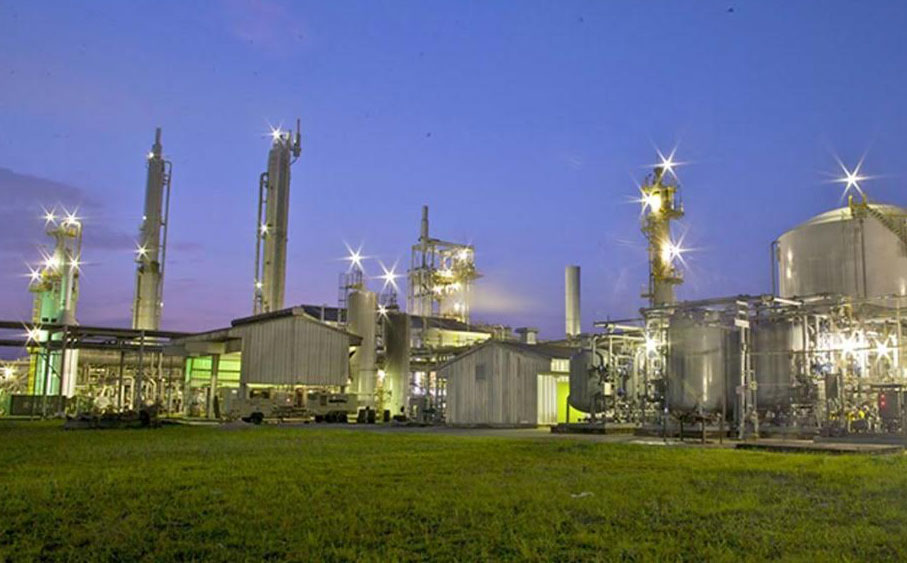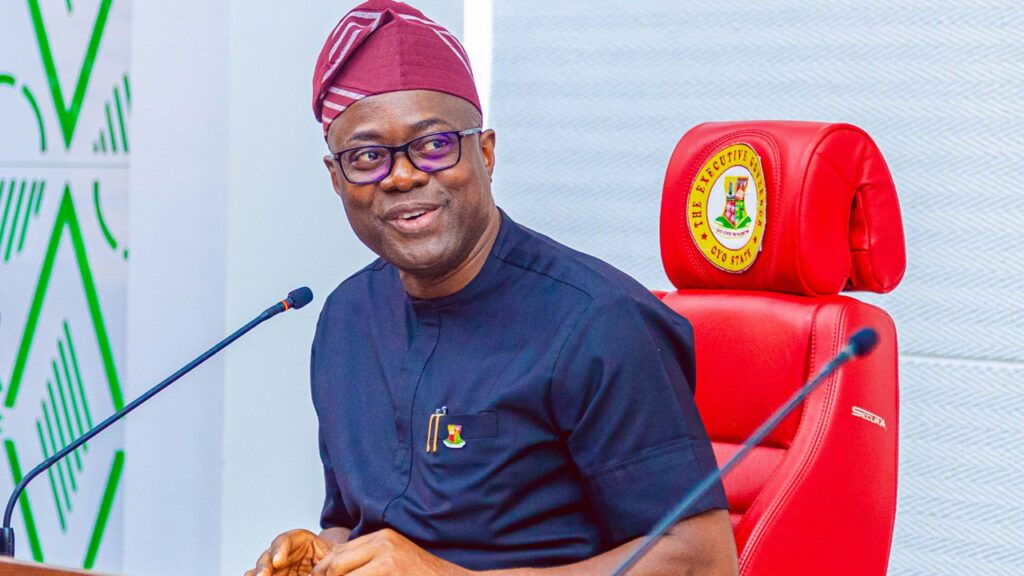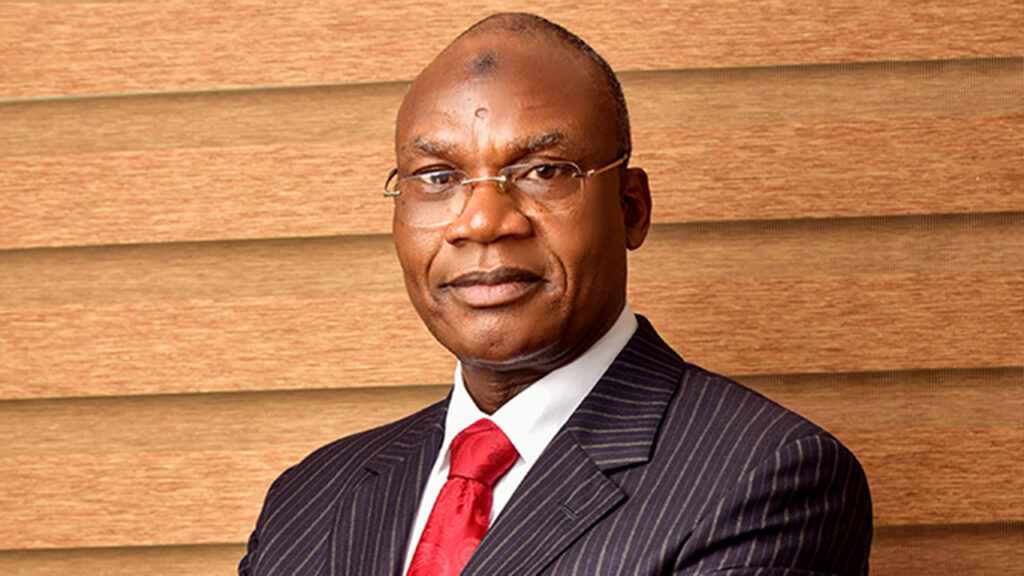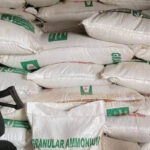 The collapse and eventual sale of the state-owned National Fertiliser Company of Nigeria (NAFCON), is an expose on how the country’s resources were intentionally and criminally mismanaged. Though it was designed to operate as a world-class firm, it was the only urea plant in the whole of sub-Saharan Africa, designed to add value to Nigeria’s natural gas through the production of fertiliser, but it actually went the usual way of past failed government interventions. GBENGA AKINFENWA, who dug deep into what led to the firm’s early demise and negative impact of its absence on the sector, galvanized the views of industry players who underscore the need by the Federal Government to revisit the privatisation process.
The collapse and eventual sale of the state-owned National Fertiliser Company of Nigeria (NAFCON), is an expose on how the country’s resources were intentionally and criminally mismanaged. Though it was designed to operate as a world-class firm, it was the only urea plant in the whole of sub-Saharan Africa, designed to add value to Nigeria’s natural gas through the production of fertiliser, but it actually went the usual way of past failed government interventions. GBENGA AKINFENWA, who dug deep into what led to the firm’s early demise and negative impact of its absence on the sector, galvanized the views of industry players who underscore the need by the Federal Government to revisit the privatisation process.
Fertiliser challenge has been a knotty one for farmers in the country, over the years. Very often, it is either in short supply or just too expensive for the end-users, especially the smallholder farmers.
This lingering supply challenge has been hinged majorly on government’s failed interventions to tackle the menace.
Going by projections, Nigeria should not be importing fertiliser to bridge its rising demand-gap; however, owing to poor planning, the reverse has always been the case.
The cost of a 50kg bag of fertiliser, previously sold for N5, 000 four years ago, now cost between N25, 000 and N28, 000. This has led to proliferation of adulterated fertilisers, which are dangerous to human health and a threat to good harvest, as farmers can no longer afford the high cost.
Investigations showed that owing to Federal Government’s eagerness to address the perennial challenge posed by the product, several policies and interventions were initiated in the past to drive the agricultural and agro-allied sector as a component of its economic growth agenda, among which was the establishment of the National Fertiliser Company of Nigeria (NAFCON).
NAFCON, sited in Onne, Rivers State, now called Notore Chemical Industries, was a state-owned company, later sold to a private firm, 0-Secul Nigeria Ltd. It was a major fertiliser-producing firm in Nigeria before it became comatose.
Located near an ocean terminal port that serves as an export zone for its products, one of the objectives of its establishment was to dent the country’s need to import fertiliser or to assuage the recurrent shortage of the product in the country.
The handlers were expected to operate a world-class firm that would add value to the country’s natural gas by the production of fertiliser, train Nigerians to manage the firm and transfer full ownership to the people and government of Nigeria.
The company made use of a gas supply pipeline from the Alakiri gas fields to fire its plants along Okrika Creek. The plant produces urea, ammonia and NPK fertilisers with an installed capacity of 1.2 million tonnes yearly.
The urea plant has a capacity to produce 1,500 metric tonnes daily, the ammonia plant has a capacity for a 1,000 metric tonnes and the NPK and phosphate plant has a capacity to produce 1,650 metric tonnes daily.
The idea of a fertiliser plant was raised in the mid-1970s preceding a feasibility survey for the project. NAFCON was formally established in 1981 during the Green Revolution period and at a time financing was sought for the project from Nigerian, Japanese and American banks.
The Guardian learnt that the initiative started out as a joint venture between the Federal Government – 70 per cent and MW Kellogg of Houston – 30 per cent. However, the Nigerian National Petroleum Corporation (NNPC) acquired the shares held by MW Kellogg in 1991. The company reportedly started production on July 23, 1987. The fertiliser plant was reportedly built at a cost of about $800m.
 A farmer applies fertiliser to his tomato plant.
A farmer applies fertiliser to his tomato plant.
It was Nigeria’s first Nitrogenous Fertiliser Company and the major producer in West Africa. Its foundation stone ceremony was done by President Shagari.
The first major challenge that faced the firm was the fact that it took longer than usual to be completed owing to all kinds of impediments by government. Even, Malaysia that started the same project about the same time with Nigeria, reportedly commissioned three fertiliser plants when Nigeria was commissioning NAFCON in 1988.
The plant was commissioned to produce three major products – liquid Ammonia, which was exported from 1987 and also sold to refrigeration and other relevant industries in Nigeria; Urea granules – a premium export item because of high biurete content of over 90 per cent from NAFCON.
Aside from the fact that the urea granules was one of the best in the world market as at the 1980s to the 1990s, it was coated with ‘skin- safe’ oil to protect African farmers who handle fertilisers manually, as one of the most “user-friendly” fertilisers globally.
Reports have it that the Pioneer Manager, Public Relations of NAFCON, Amaopusenibo Bobo Sofiri Brown, when NAFCON was under international management of MW Kellogg Inc of Houston Texas US, as leader of five foreign companies that were involved in design, construction, operations and management of the company till 1991, led the team along with an expatriate consultant, Mr. Bob Kerrigan, that presented the Urea granules sample at NAFCON’s first appearance at the highly technical and prestigious The Fertiliser Institute (TFI) conference around 1987, in New York.
The third product was NPK or blended fertiliser. This was designed to give farmers a choice to get best yields from preferred type of crops like grains – Maize, Rice, Soy beans and others, versus tubers – yam, cassava or soil type – savannah versus Swamp terrain.
Brown told The Guardian that at inception, NAFCON was producing about 1000 metric tonnes of Liquid Ammonia (NH3) daily, with equal tonnage of Urea and NPK.
“It had huge storage tanks for liquid Ammonia and warehouses that could contain about 30 days’ production. So, its raw materials supply and distribution networks were of international efficiency level, to ensure there was no failure in shipment or haulage truck schedules.
“NAFCON made it possible for fertiliser blending plants to spring up in Kaduna and other parts of Nigeria, thereby, supporting rapid agro-industries. It was so from 1987 to 1992 when I resigned from NAFCON at the expiration of the international management contract, led by MW Kellogg of Houston TX, (USA).
“I joined the project team in 1986 as pioneer Head of Public Relations (PR) and was promoted to first Manager PR under MW Kellogg led international management team. The company achieved a record of unbroken supply-chain reliability and global customer confidence. Its outstanding achievement of set goals, made the Federal Government to initially approve an expansion project called NAFCON 2 by 1990.
“I was part of management delegation that approached the World Bank, US-Exim bank and other financiers of the first NAFCON project, to support NAFCON 2. That project was attractive to international financiers because it roughly was to double the company’s production and supply capacity in both local and international markets,” he said.

It was learnt that the continent’s low fertiliser usage per hectare of farmland – about 20 per cent of usage in Asia, North America or Europe was a major window of opportunity for Nigeria to dominate as a powerhouse of the agro- industrial landscape of Africa.
Industry players said the prospect did not go unnoticed by the international mafia groups, as they depended on profits of about $100m to $200m yearly from Africa’s fertiliser market. It was further revealed that some mafia groups in the fertiliser business fought hard to derail or delay NAFCON’s entry into the international market between 1986 and 1988.
However, due to the fact that Nigeria paid little or no strategic attention to the activities of the mafias, the prospect of becoming Africa’s continental hub in Oil and Gas, as well as agro-industries, was lost on the political elite with the eventual ‘death’ of the plant.
Brown, who attested to this fact, said with four petroleum refineries working at full steam between 1988 and 1991, Nigeria, had a major influence in Africa’s energy market. He noted that when NAFCON was added to the mix, a true economic “giant of Africa” was in the making, but was lost.
It was gathered that by 1992, the foreign companies sold their shares to the Nigerian government and the shares were paid for through the NNPC. As at the period, journalists and other stakeholders in the industry kept NAFCON on its toes to ensure the dream unfolded into reality and brought credibility to Nigeria for best Urea fertiliser quality.
Brown said: “We surprised international fertiliser markets with quality of Nigeria’s urea (over 90 per cent biurete level) and reliable operations management to meet scheduled production and deliveries. From 1988 we produced ammonia (liquid fertiliser), urea coated fertiliser granules and compound fertilisers (NPK).”
Reports have it that when NAFCON began production in July 1987, it was producing between 110 per cent to 115 per cent installed capacity and was adjudged Nigeria’s most successful indigenous manufacturing company and the highest foreign exchange earner, after petroleum.
The market for NAFCON brand of blended NPK was very large, because of the recognition of its high quality and availability of multiple grades.
Four years after, 1991 to be precise, it was learnt that NAFCON was already a huge success and a monument of national honour and pride. As a testament to the feat, from 1989 to1992, the company received several international awards as best producer of urea products in the world, as its premium ammonia and urea far exceeded world standards.
With this, NAFCON was therefore declared self-reliant and self-sustaining.
But no sooner this confirmation came to limelight that the plant began to have issues, which later led to its comatose.
The Guardian learnt that the decline in the fortunes of NAFCON began in 1995, when the company in the face of numerous odds, surpassed the production target of fertiliser required for the Federal Government to stop importation that year.
After the bumper production, the company could not undertake the necessary turnaround maintenance of the plant, which was then overdue because proceeds from the sales of fertiliser did not come on time and when it did, it came in trickles.

Industry analysts say the last installment payment from the 1995 sales was received in the year 2000, five years after. It was further learnt that the expected revenue from the 1995 sales was slashed in 1996 from N19 billion to N12 billion when government unilaterally fixed the prices of NAFCON fertiliser products below the operating cost.
For instance, on July 7, 1999, the failure of the Waste Heat Boiler Tubes in the Ammonia plant caused the entire facilities to be shut down.
Prior to the shutdown, the plants had operated below 50 per cent capacity utilisation caused by the erratic operations of the Water Treatment Units.
Reportedly, three proposals for completing the revamp work were received from engineering firms and evaluated both by NAFCON and the Technical Board but no directives were received from the supervising Ministry of Industries.
This resulted in the slow and steady decay of the plant and equipment as critical spares required to keep the plants minimally on stream could no longer be procured.
Sadly, the plant, which pride itself as the image of the country began to derail as many forces – government’s lackadaisical attitude, plus activities of mafia groups saw to the early demise of the initiative. Shortly thereafter, it lost the toga of the Nigeria’s most successful indigenous manufacturing company and the highest foreign exchange earner, after petroleum.
One of the first albatross to the early downfall of NAFCON, according to industry analysts was what they termed – government conflicting policies.
It was learnt that the control of the company by federal authorities looked unfocused as the supervision alternated among ministries, especially after the completion of the ‘Nigerianisation’ process in 1991.
The Guardian learnt that from inception to 1995, NAFCON was under the control of the Federal Ministry of Industries. Later in 1995, the supervision of NAFCON shifted to the Federal Ministry of Agriculture, just because the company was producing fertilisers for farming, and remained there till 1997 when supervision of the company moved to the Presidency.
As if that was not enough, in 1998, the Federal Ministry of Agriculture once again took back the supervision of the company until 2001 when the company shifted back to the Federal Ministry of Industries.
Stakeholders raised serious concerns that the apparently unending shift of supervision, which looked unguided, unfocused, and uncertain negatively impacted the company.
Before 1995, 1992 to be precise, contrary to the expectation of many, the Federal Government, under the administration of General Ibrahim Badamasi Babangida (Rtd), announced that NAFCON was among industries to be privatised, but never advanced any reason(s) for the planned action.
Shortly after this, the Technical Committee on Privatisation and Commercialisation (TCPC) made many trips to Onne to inspect and valuate the company in readiness for privatisation or outright sale.
Although from its inception till when NAFCON stopped production, it reportedly produced a cumulative total of 6,600,000 metric tonnes of granular fertiliser and 3, 500, 000 metric tonnes of ammonia, NAFCON potential to produce explosives, fibre glass (for boats), glass-sheets, and plastics were untapped.
In fact, NAFCON was the only company in Nigeria that could produce high grade explosives at the time of its operations. Management and workers in the urea plant were aware of the enormous untapped potential of the company, but chose to concentrate on fertilisers and depend on the revenue.
According to available statistics, Nigeria lost average revenue of N336m daily from the collapse of NAFCON between the time it was shutdown till it was sold to O-secul Nigeria Limited in August 2005.
According to reports, its 5,500 employees and 2,000 causal workers lost their means of livelihood; over 350,000 households that NAFCON was providing livelihood by its downstream and upstream activities lost their sources of income.
But those who had expected that the various uproar, allegation and counter-allegations that trailed the collapse of the world class plant would be laid to rest with the ‘forced’ privatisation, were wrong as the privatisation process sparked-off fresh hullabaloo that is yet to die down 20 years after the new owners took over.
While stakeholders in the sector and farmers were still regretting the sudden collapse of the promising dream and the possible way of bringing it back to life, they were jolted by the way and manner at which the plant was sold off.
Though the privatisation of the plant clocked 21 years last month, much-reactions are still trailing what a section of the stakeholders and industry players described as scandalous tale from NAFCON.
A farmer, based in Lafenwa, Abeokuta, Ogun State, John Ikemefuna, said the NAFCON saga is an exposé on how Nigeria’s resources were intentionally and criminally mismanaged. He added that the sad tale of the fertiliser company’s premature demise has become a tradition that continues in the country till date.
The Guardian investigations showed that on March 13, 2013, Sino-African Petrochemicals Co Ltd, the only company from the seven that went through with the Bureau of Public Enterprise (BPE) midwife-privatisation bid, offered $66m for 100 per cent equity in NAFCON.
It was gathered that the company had earlier made a $100,000 offer, plus its estimated N15b debts or $46.1m without the debts. With that, a N500m investment in 1981 yielded a gross return (principal, dividend, interest, capital appreciation) of either $100,000 or $66m, depending on which package is being considered.
During the privatisation process, which started in 2002, two startling facts were uncovered. Reports have it that during the process, which involved appointment of advisors, diagnostic analysis expression of interest, pre-qualification, due diligence, and technical and financial bids, it was discovered that the plant built for $500m in 1981 could actually be built for $300m as at this period. It was also revealed that the firm has been out of operation since 1997 but has been paying the salaries of its 3000 staff since then.
But the Pioneer Manager, PR of the company, Brown, debunked the insinuation. “Your claim that NAFCON was paying salaries without being in production is not known to me.”
The Guardian learnt that cases worse than the NAFCON saga abound. According to investigations, one of the scenarios is the case of the Aluminium Smelting Company of Nigeria (ALSCON), a company incorporated with the Federal Government, Ferrostaal of Germany and Reynolds Incorporated of America, whose story of privatisation still remains a misery.
Reports have it that while it has been estimated that $25 million was enough to turn the key, Reynolds, a 10 per cent shareholder got a suspicious 10-year marketing contract, while the Federal Government spent about $1.2 billion monthly to keep the comatose company from June 1999 to November 2022.
Another instance is the case of the Nigerian Telecommunications Limited (NITEL). It was alleged that items bought from 1974 to 1994 were overpriced. On the Nigerian Railway Corporation, it was alleged that the railways paid salaries of N190m monthly as against N30m revenue generating capacity, while the defunct National Electric Power Authority (NEPA) now Power Holding Company of Nigeria, allegedly spent $1b for yearly maintenance.
A source, who doesn’t want his name mentioned, alleged that the NNPC is paying and promoting refinery staff “who have not processed even one litre of any fuel, from a barrel of crude oil allegedly since 2000.
“Perhaps, it is noteworthy that same NNPC was used by the Federal Government to buy over shares of US, European and Asian companies in the international Joint Venture that designed and operated NAFCON from project stage before 1986, to a successful production stage between 1987 and 1992.
The Founder, International Cocoa Diplomacy (ICD), HRM Oba Dokun Thompson, the Oloni of Eti-Oni, Osun State, suggested the need for the Federal Government to revisit the privatisation process with serious consideration for collaboration strategies and structure with a view that NAFCON is an asset that is primarily a value addition entity with capacity to generate forex rather than to just satisfy our domestic need.
He said: “Many always say that government has no business in business, but the truth is government can help point out the direction where businesses need to be going. NAFCON, though initially owned by government, it was not properly structured with the right framework in place from the onset. So, it was going to fail anyway.
“The government should have put in place the necessary collaboration and partnership for the ownership and operational structure because of the level of investment at the onset for the right market reach approach, which should have been international rather than just domestic.
“Mind you, if NAFCON was in operation in the manner it should have been in the first instance, this also does not guarantee local supply because if raw materials are scarce, there may be other international markets with existing contractual obligations that may take priority to be fulfilled and so the domestic market may suffer as that result except there is a guaranteed ratio of its output set aside for domestic consumption to protect unnecessary request of forex to import what is being manufactured locally.”













